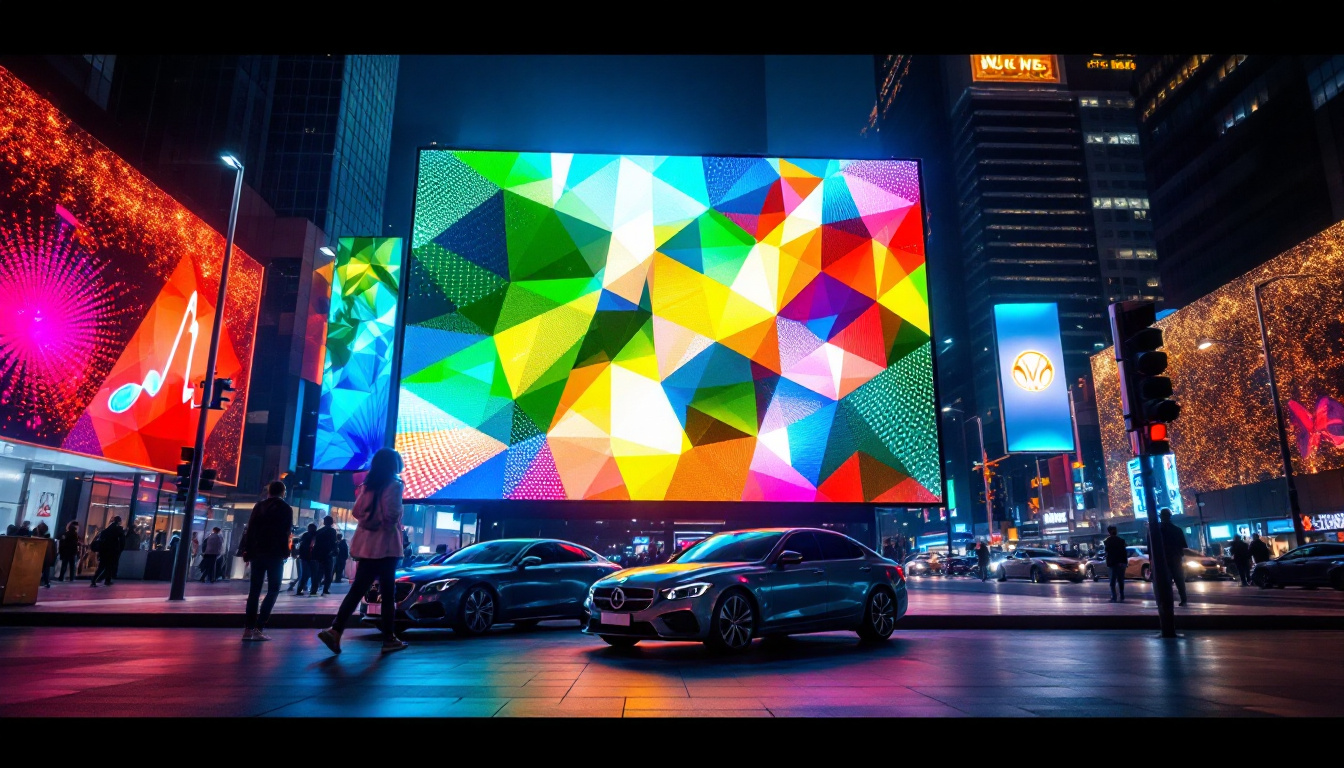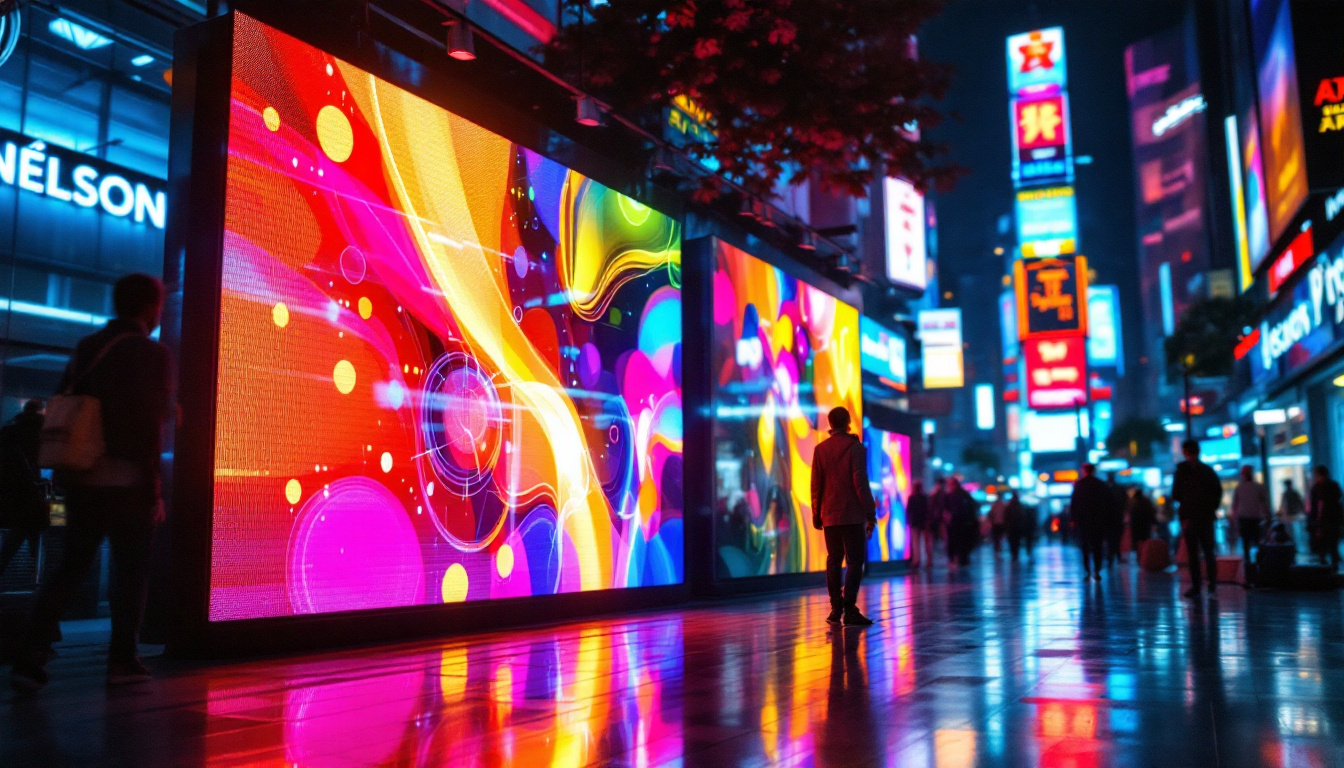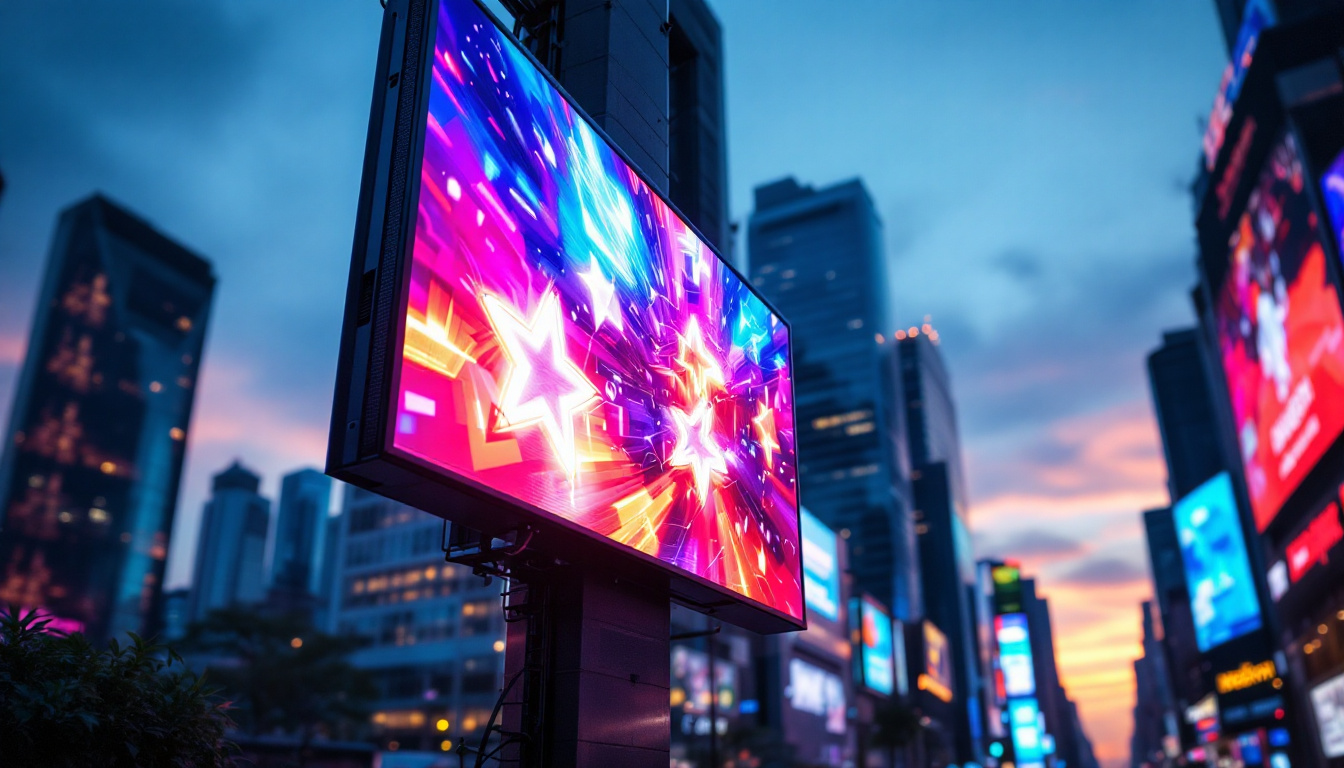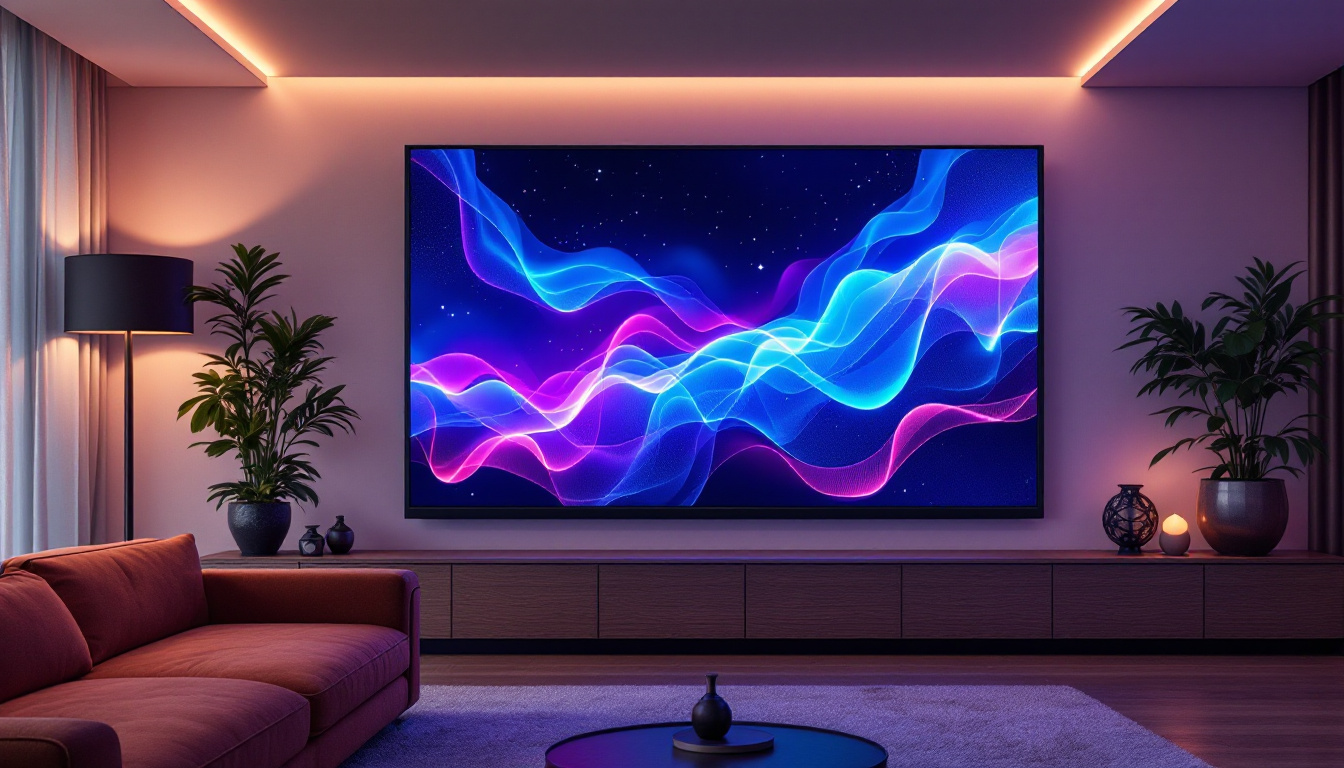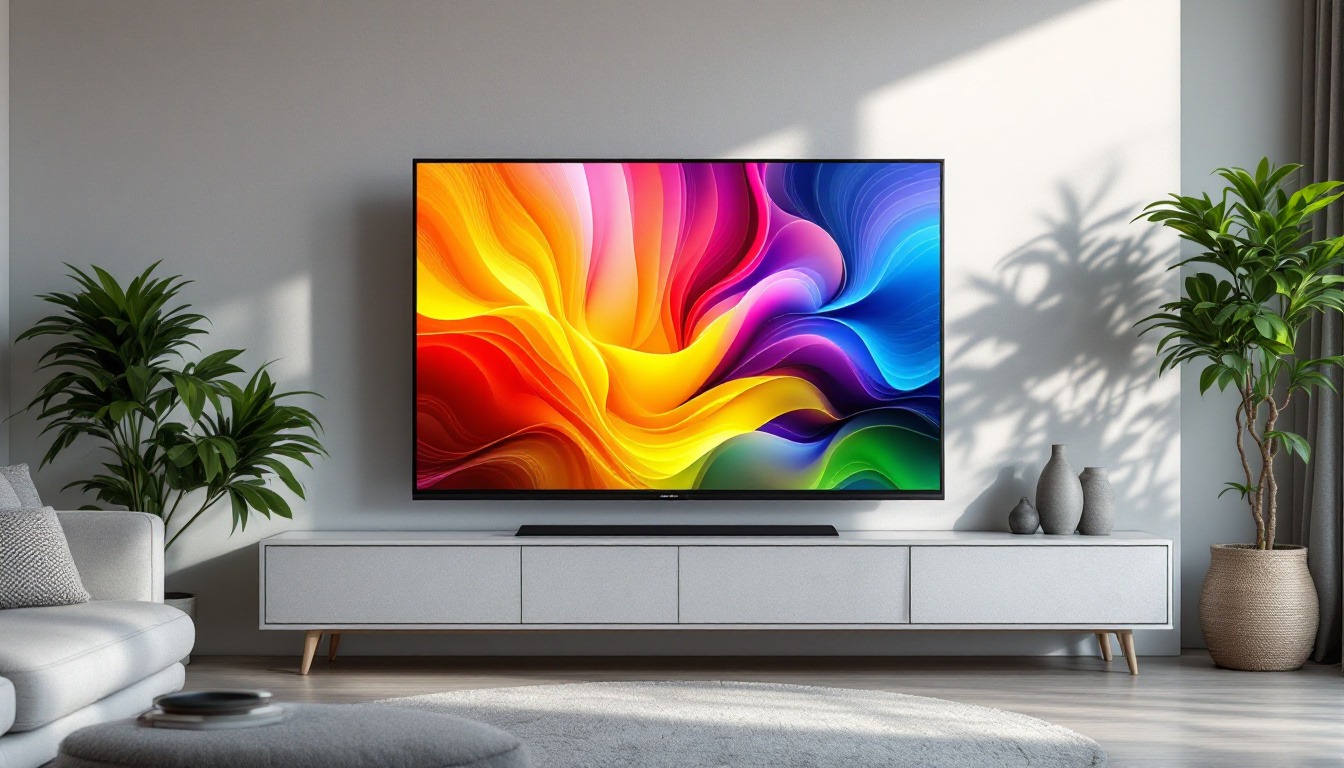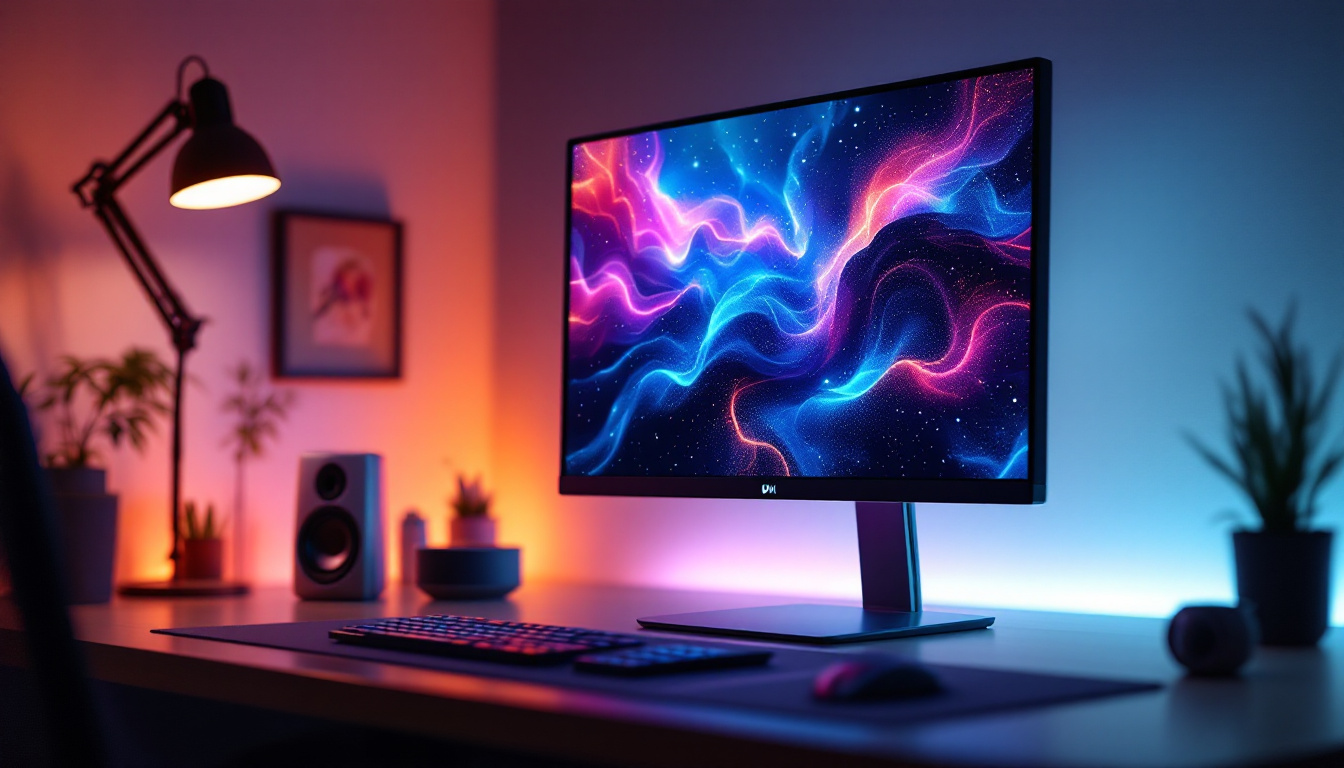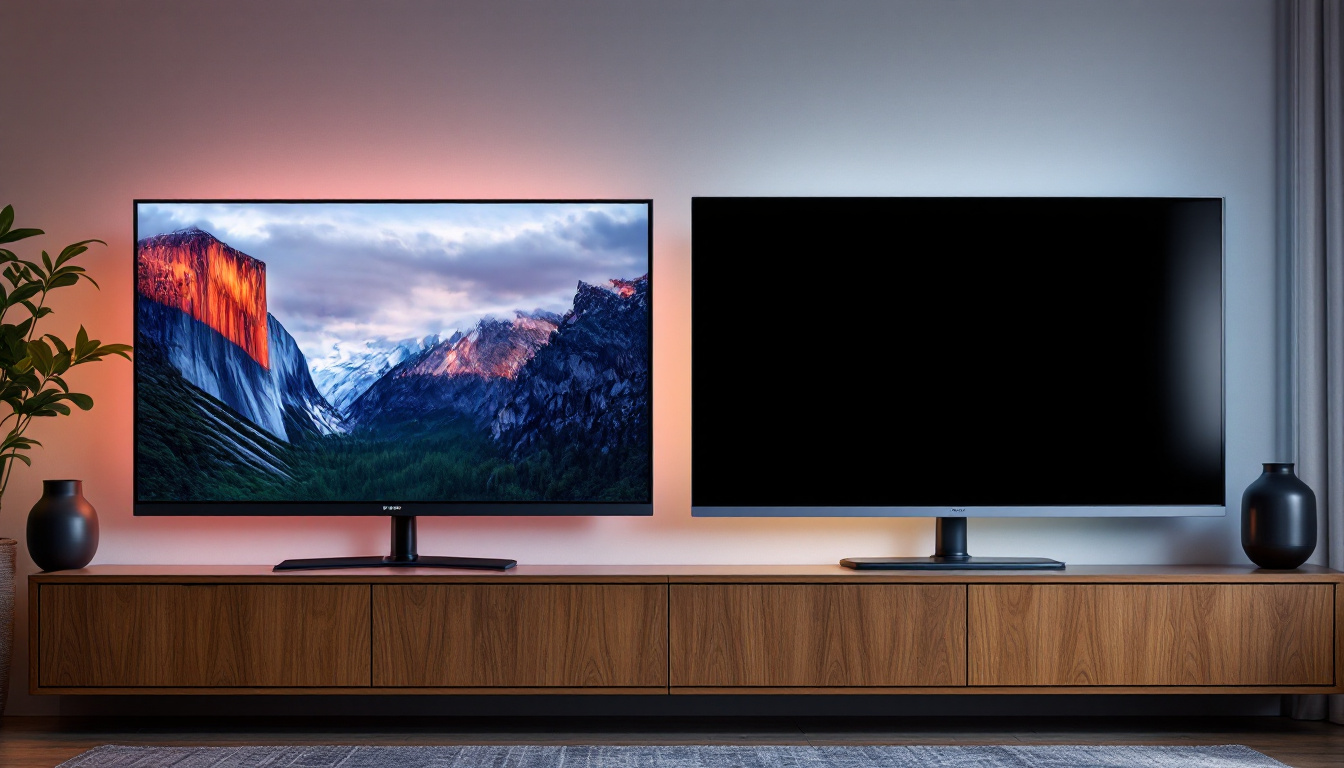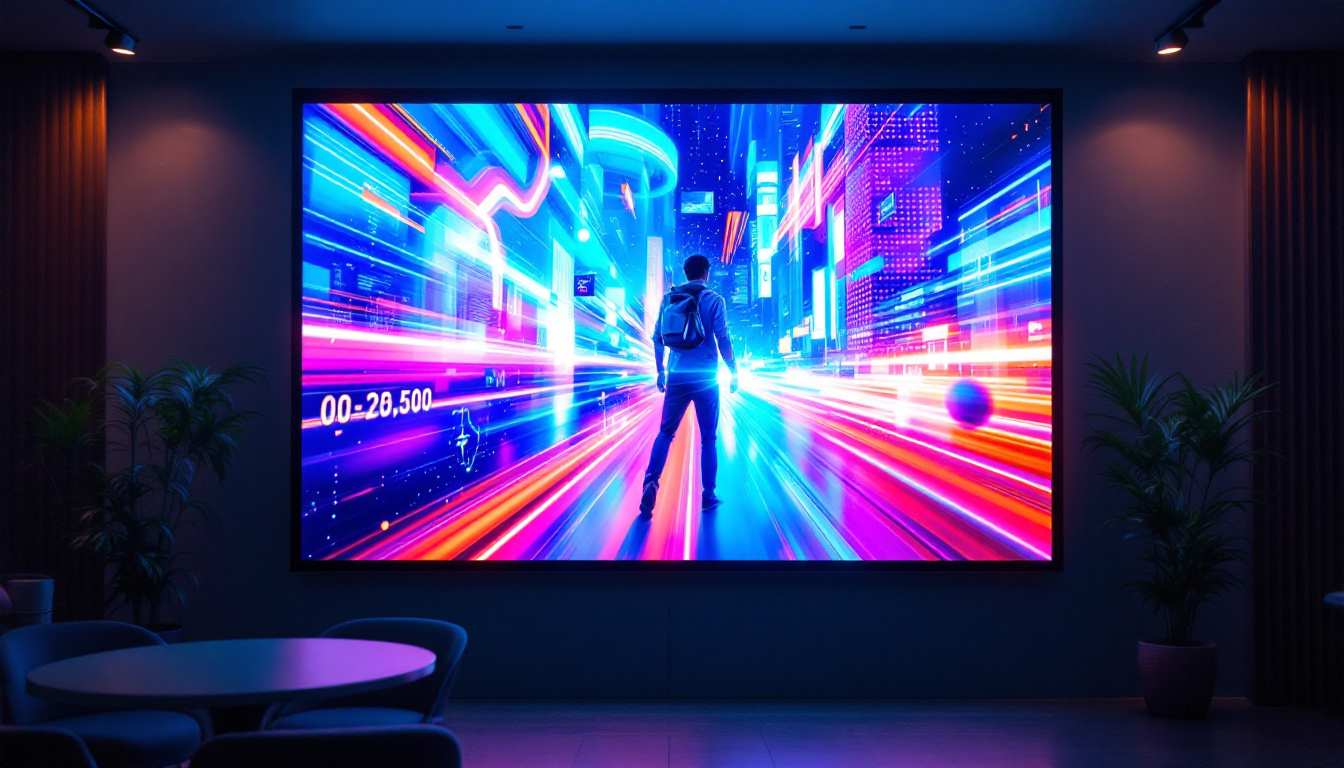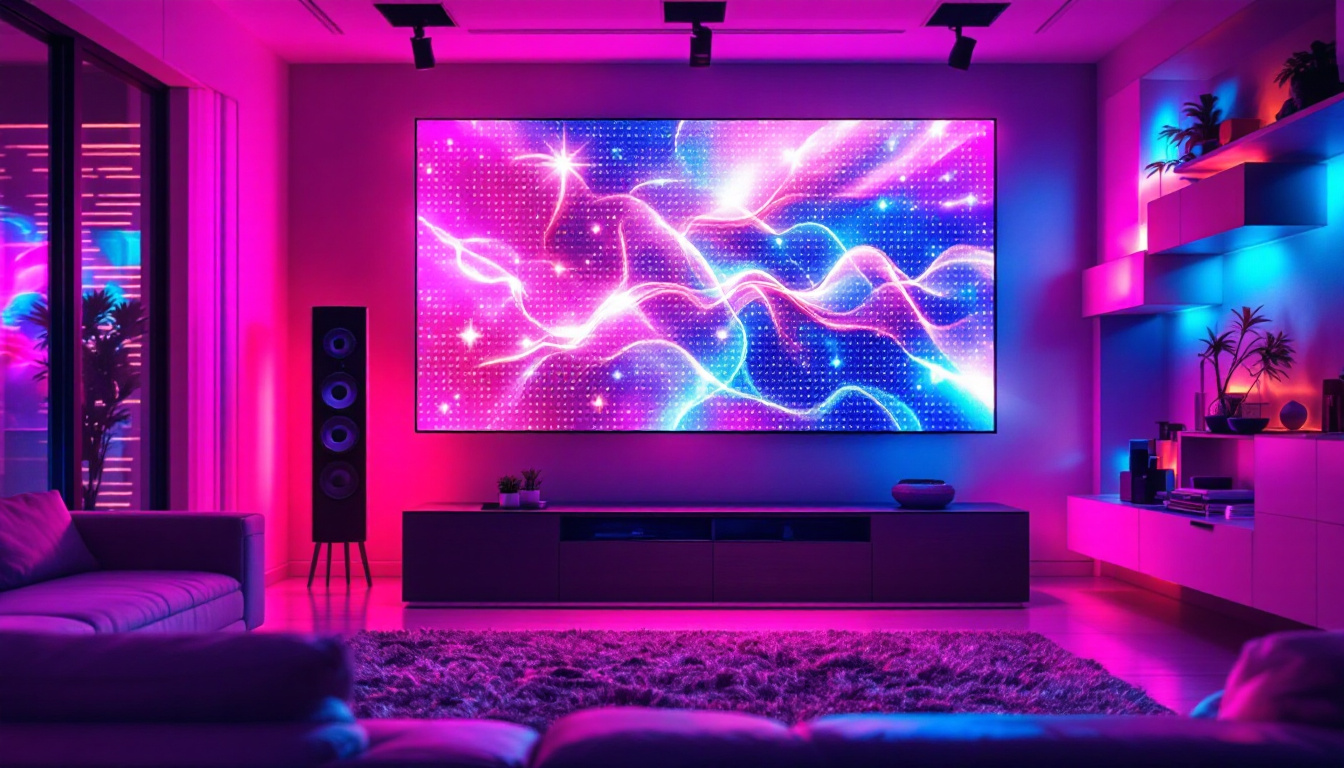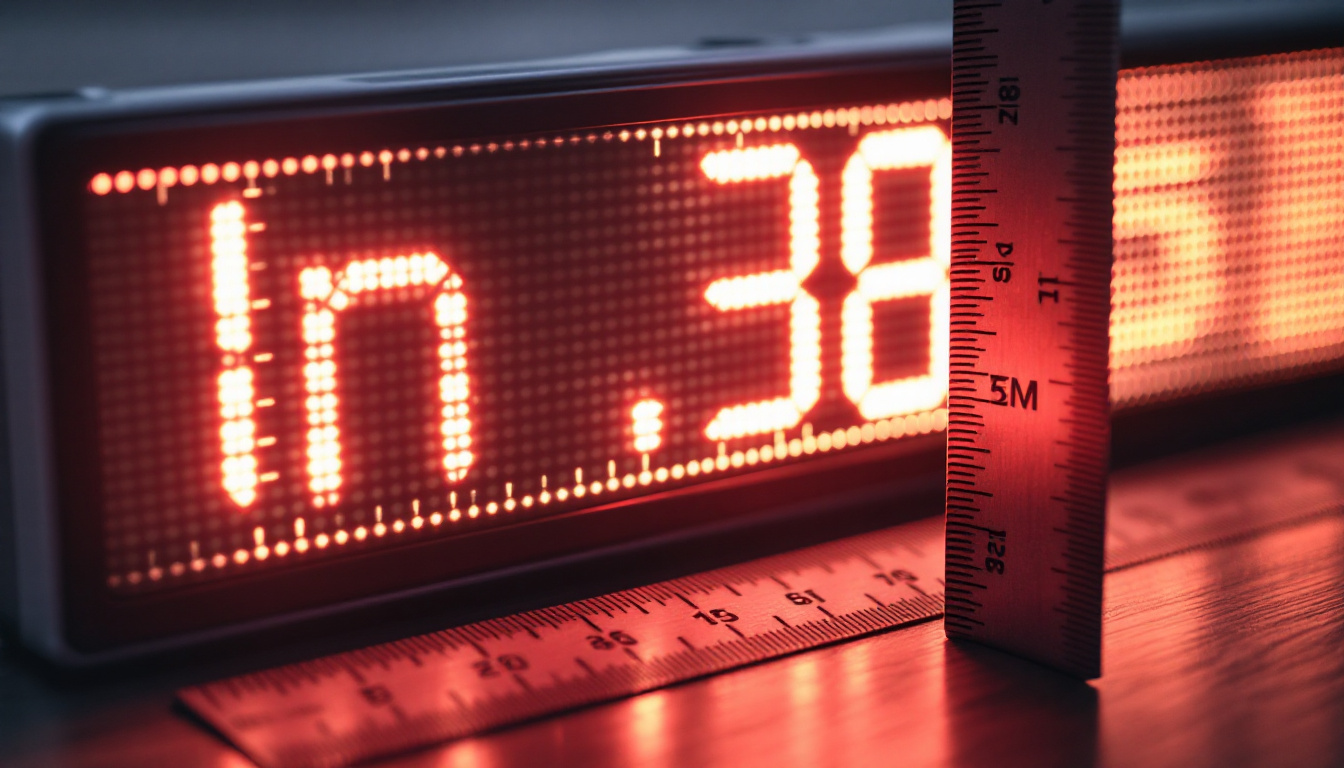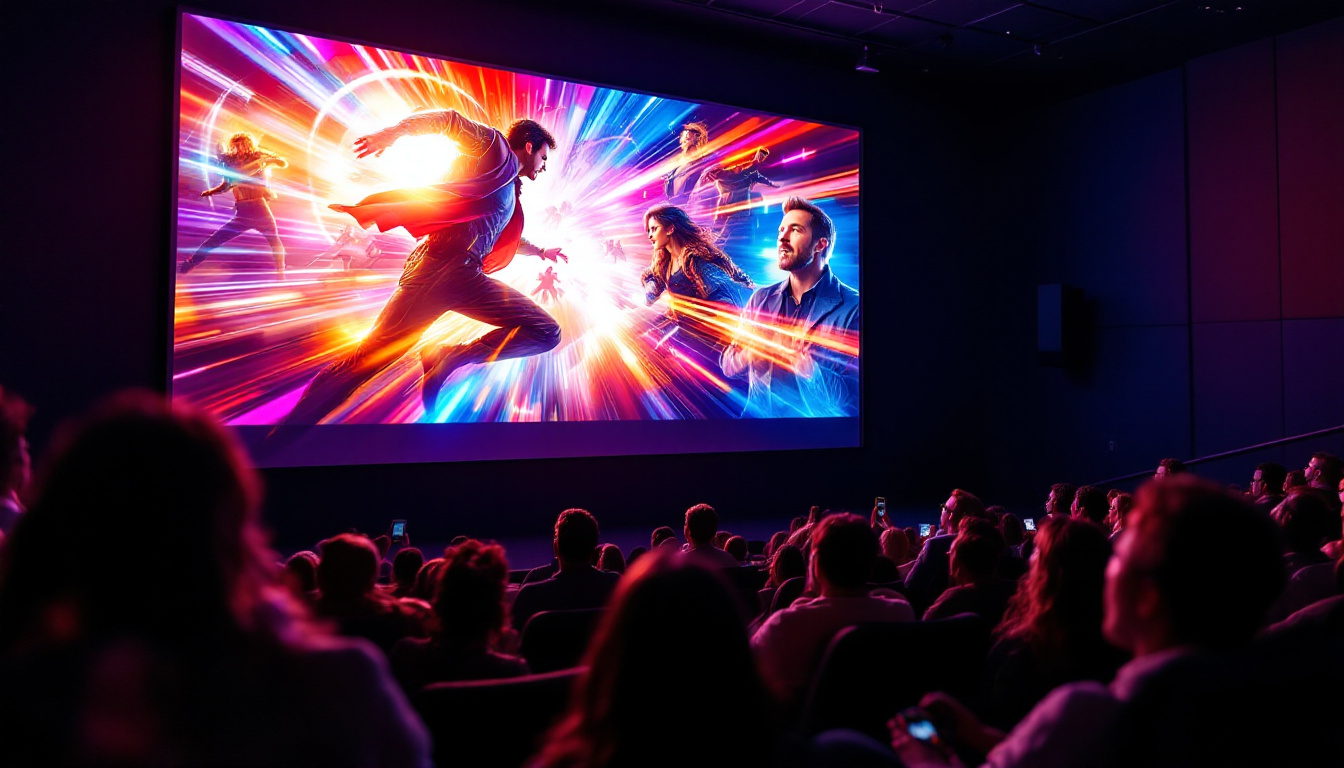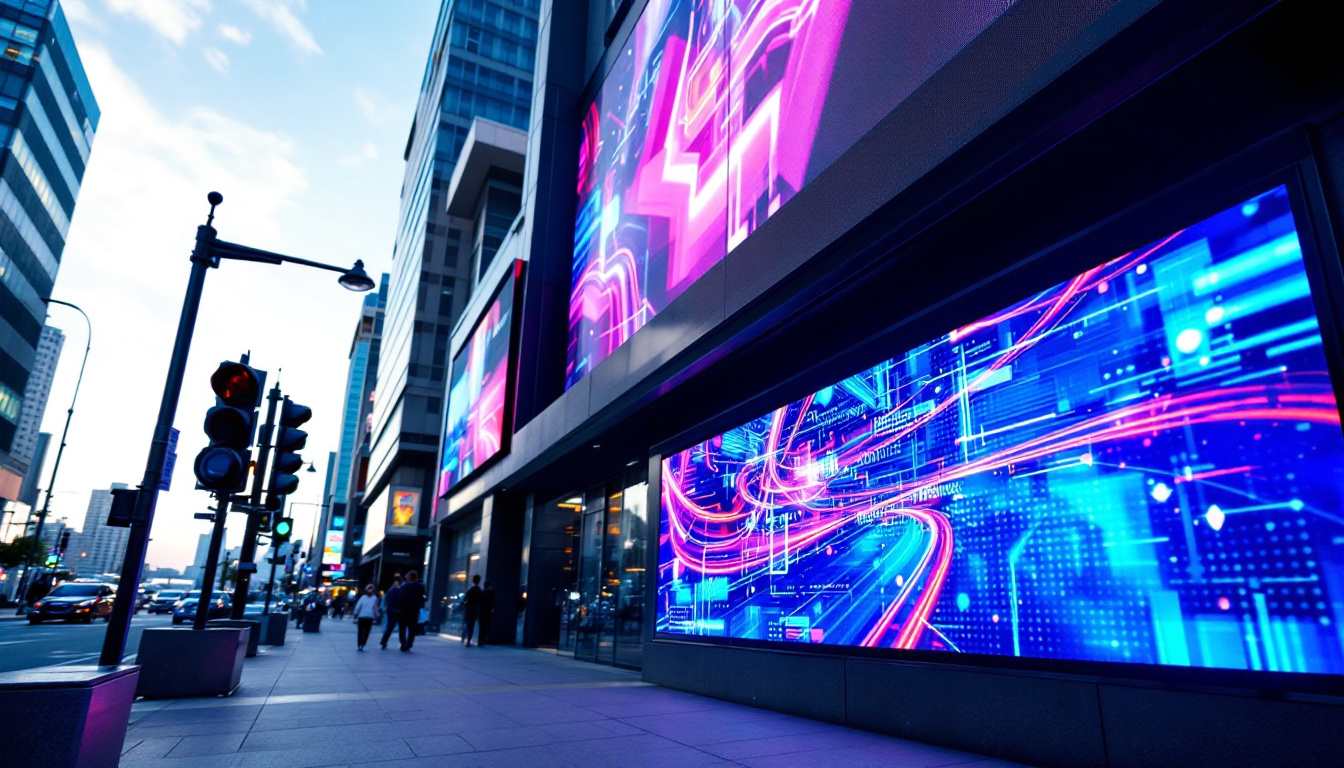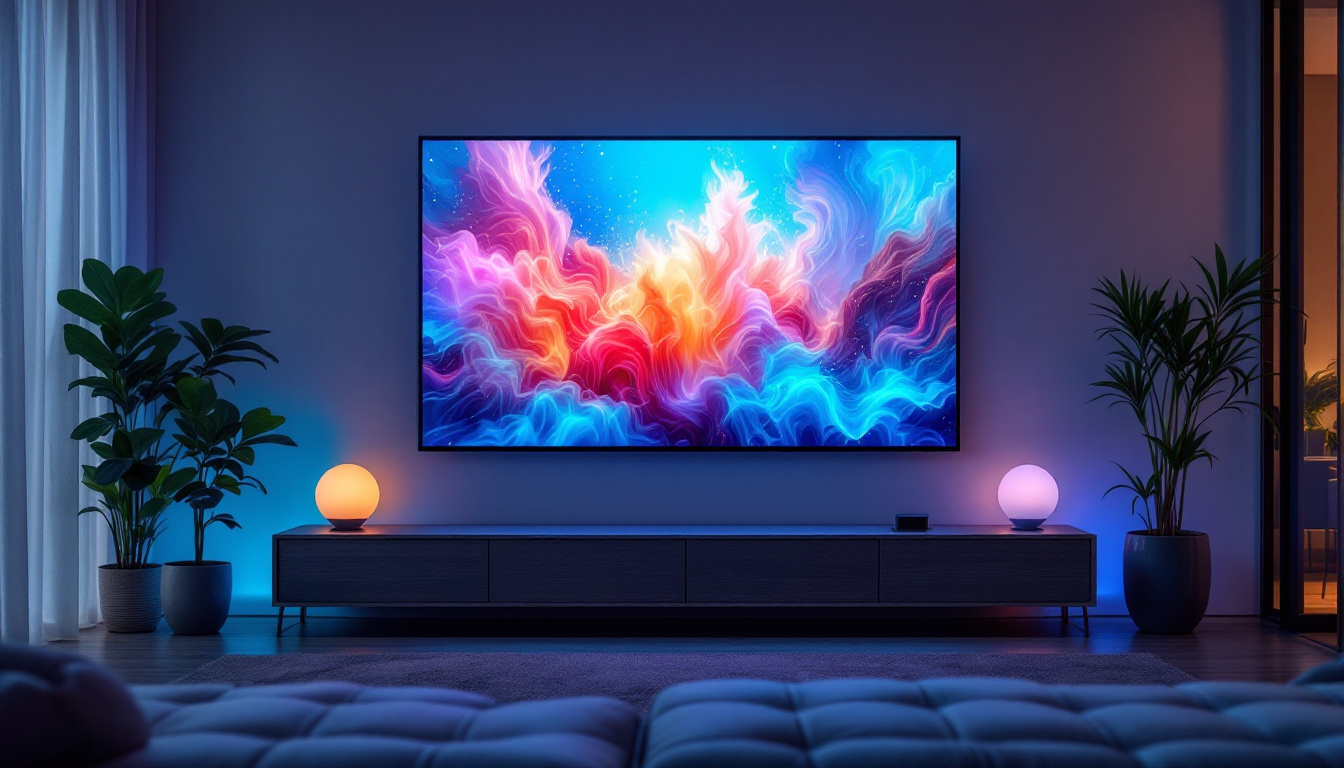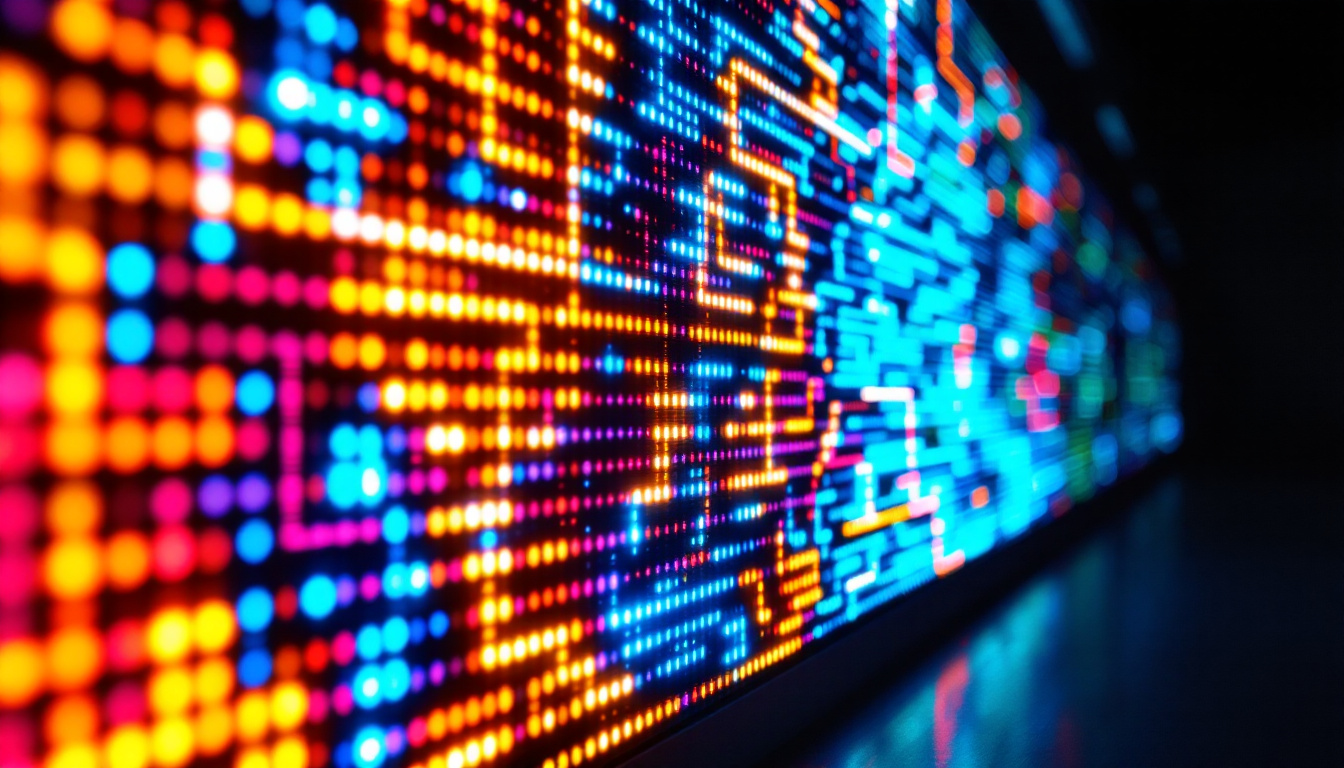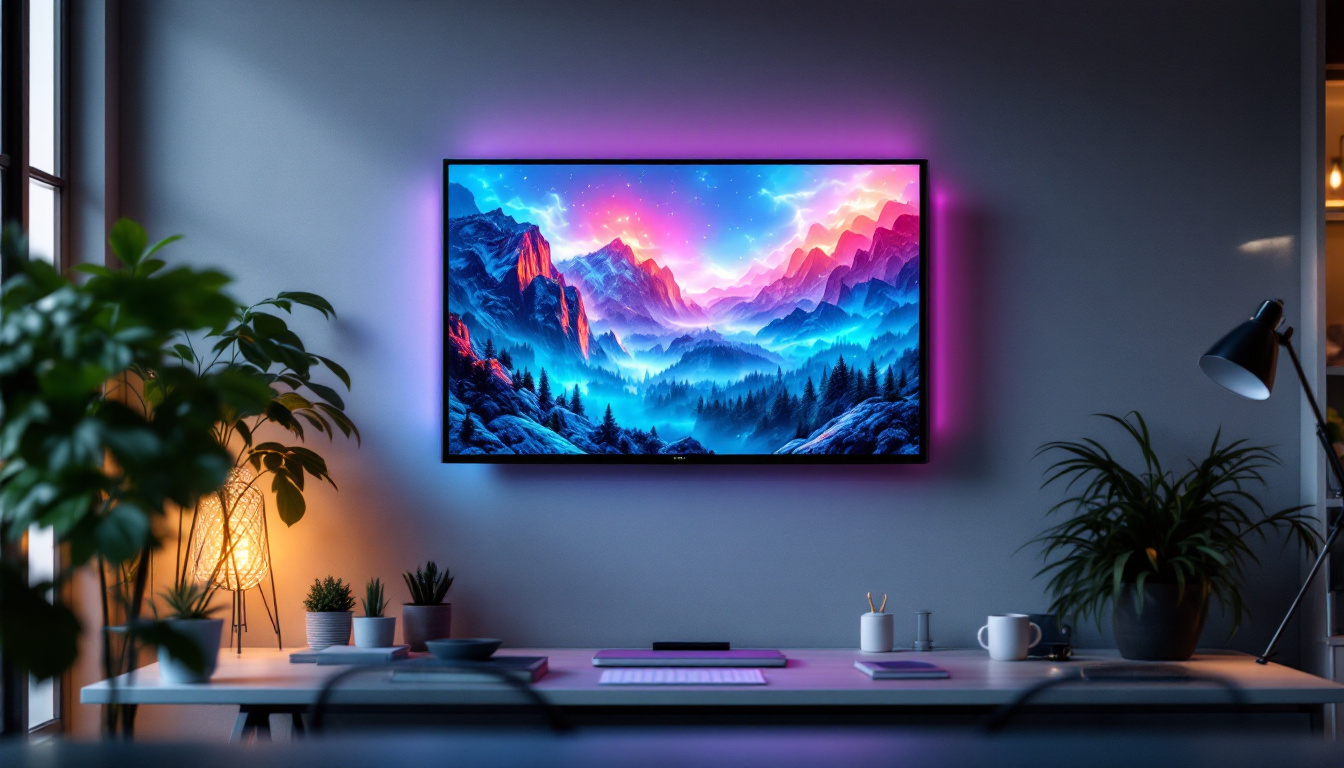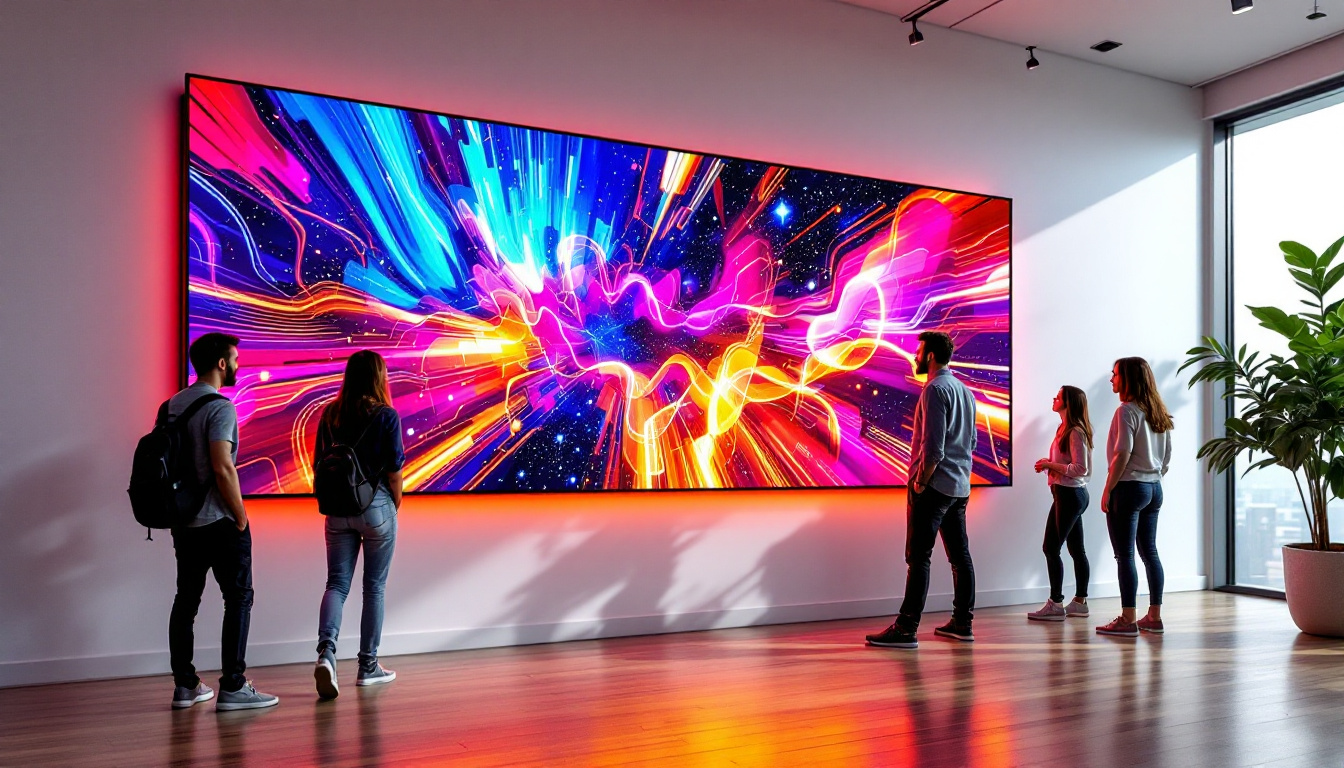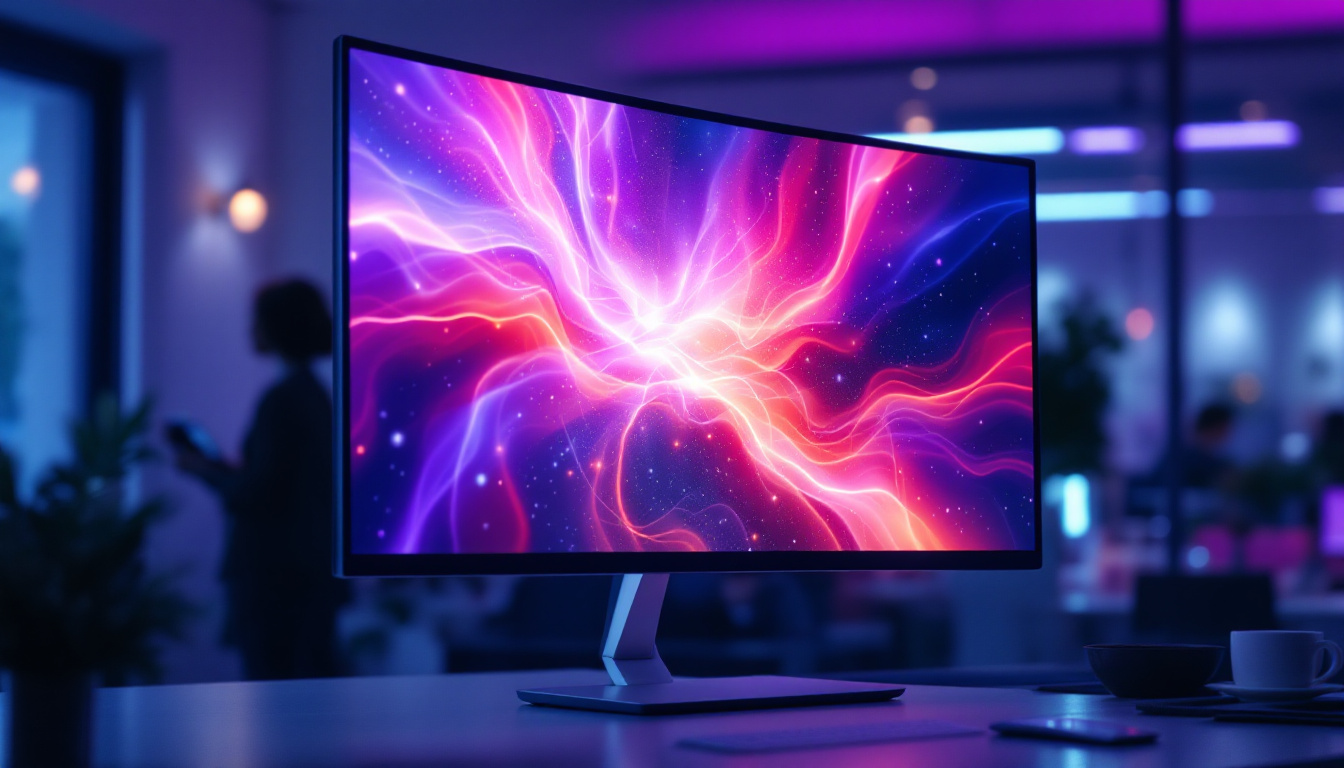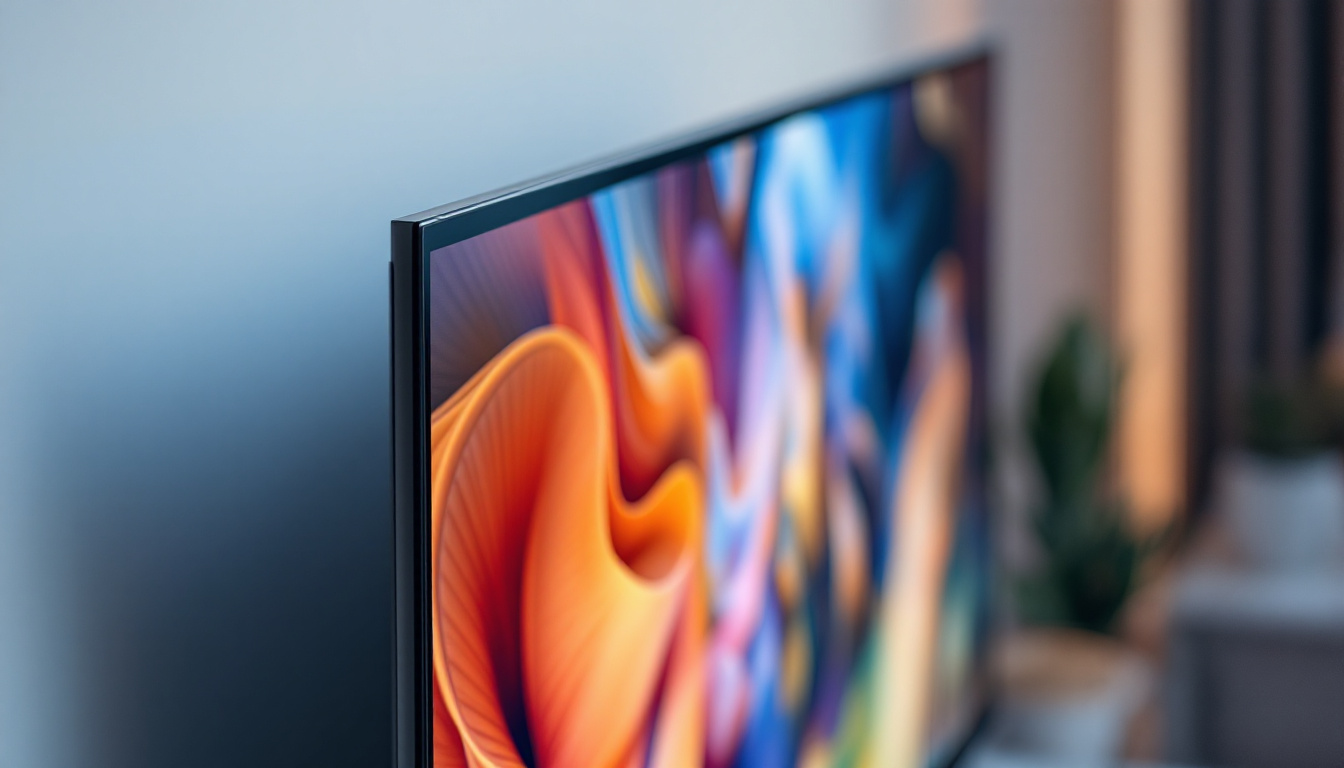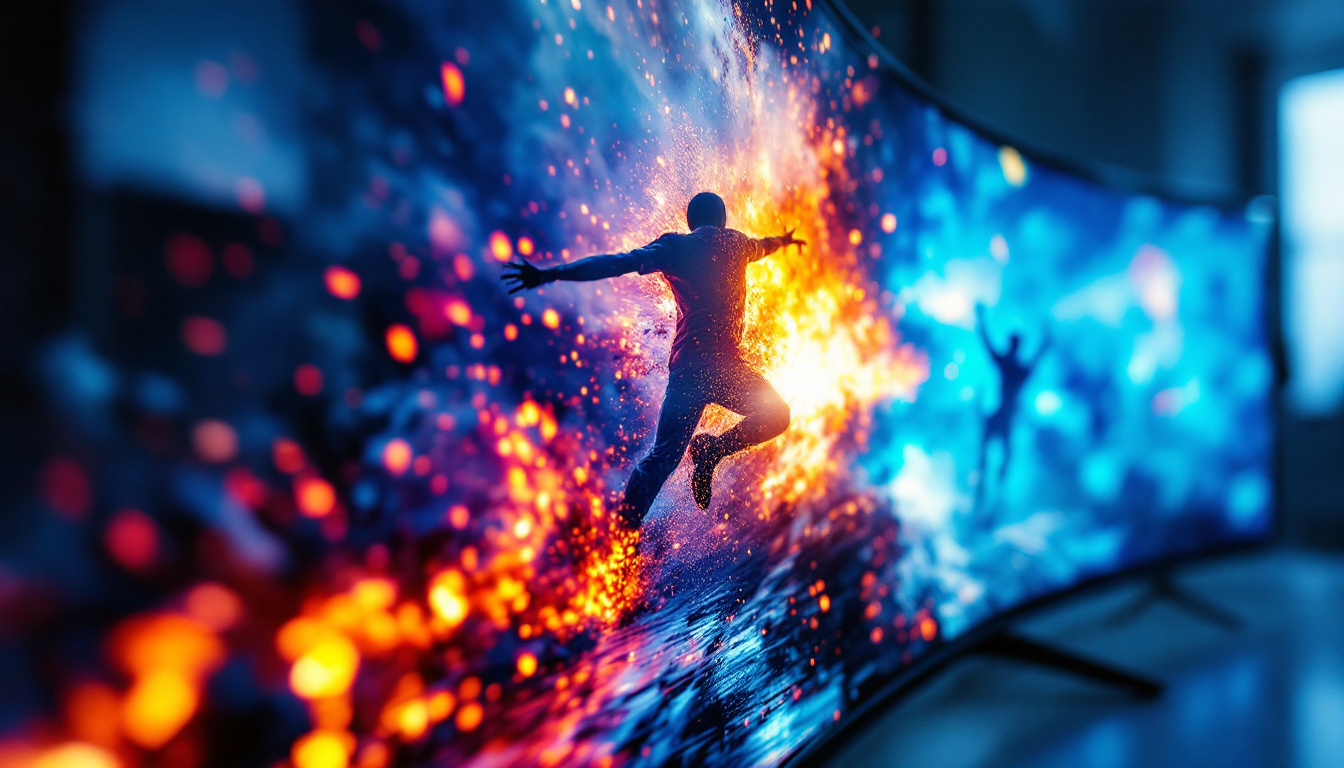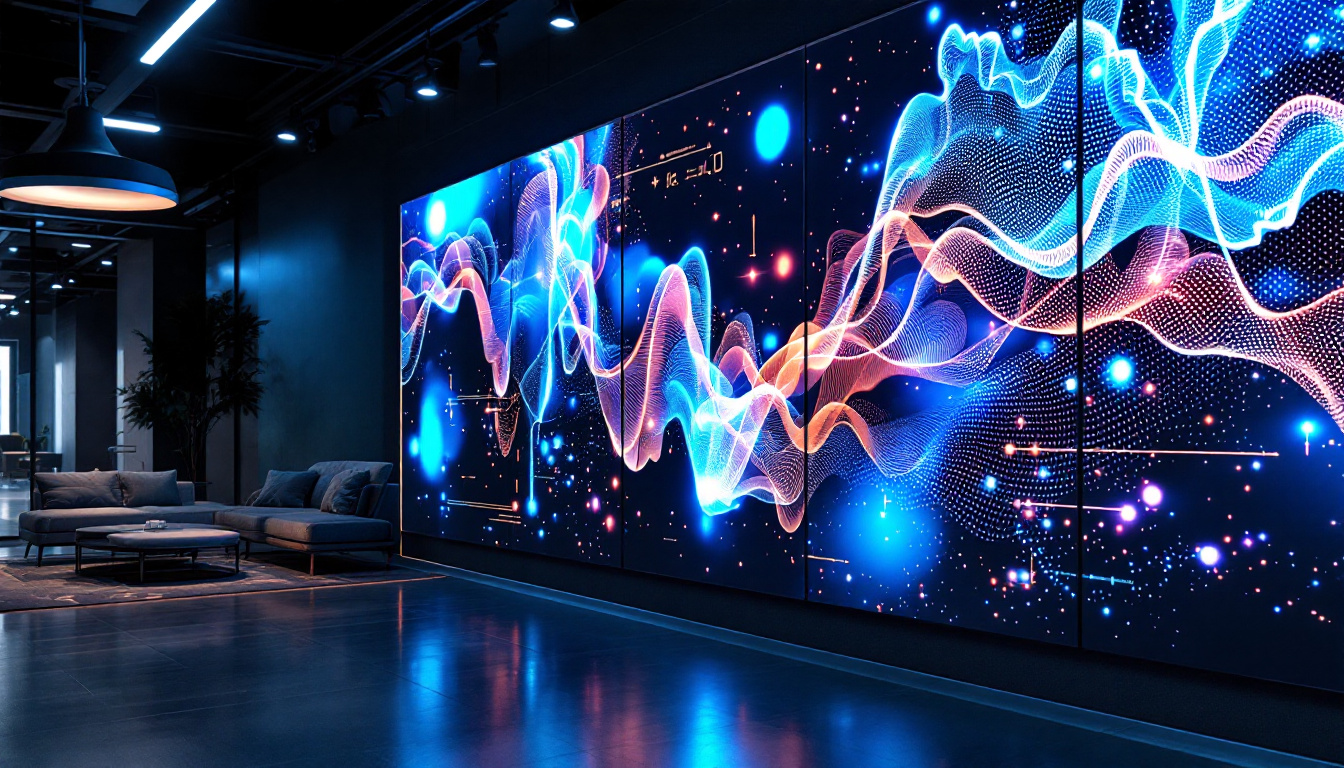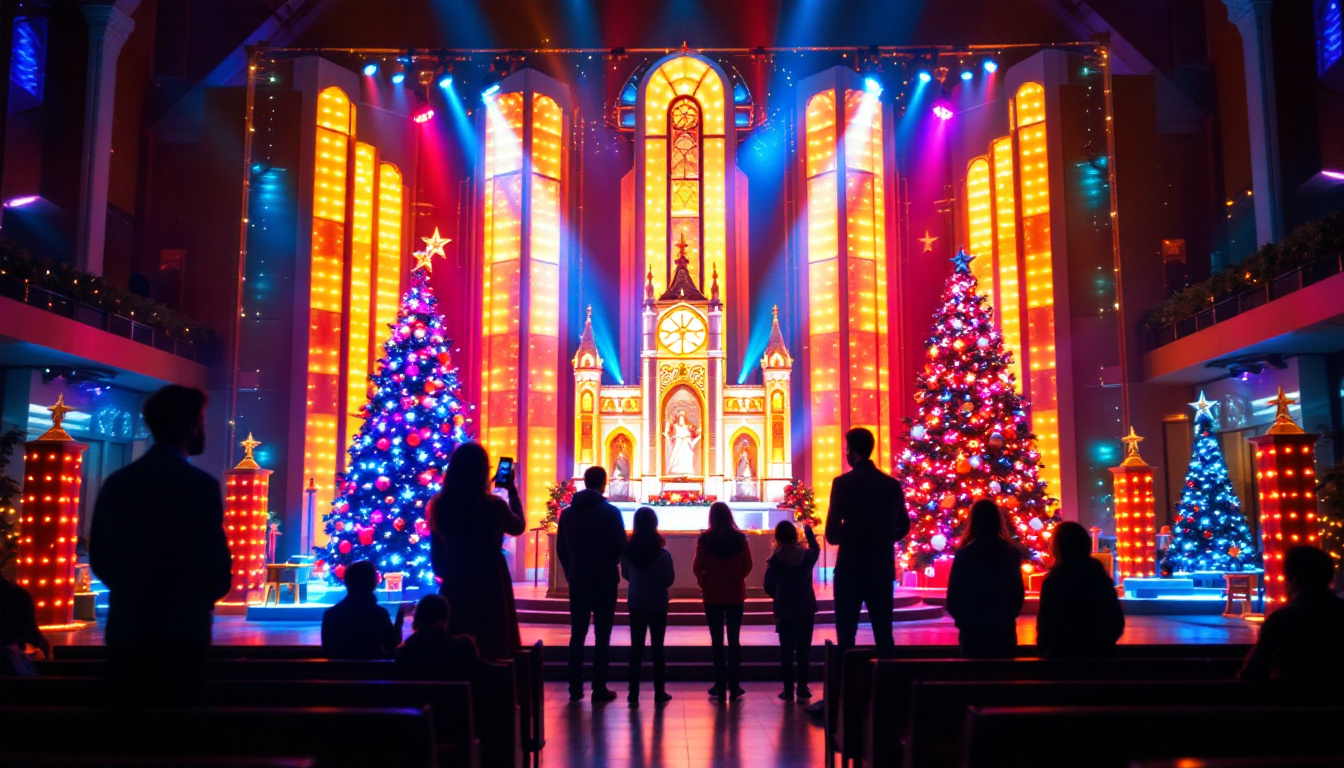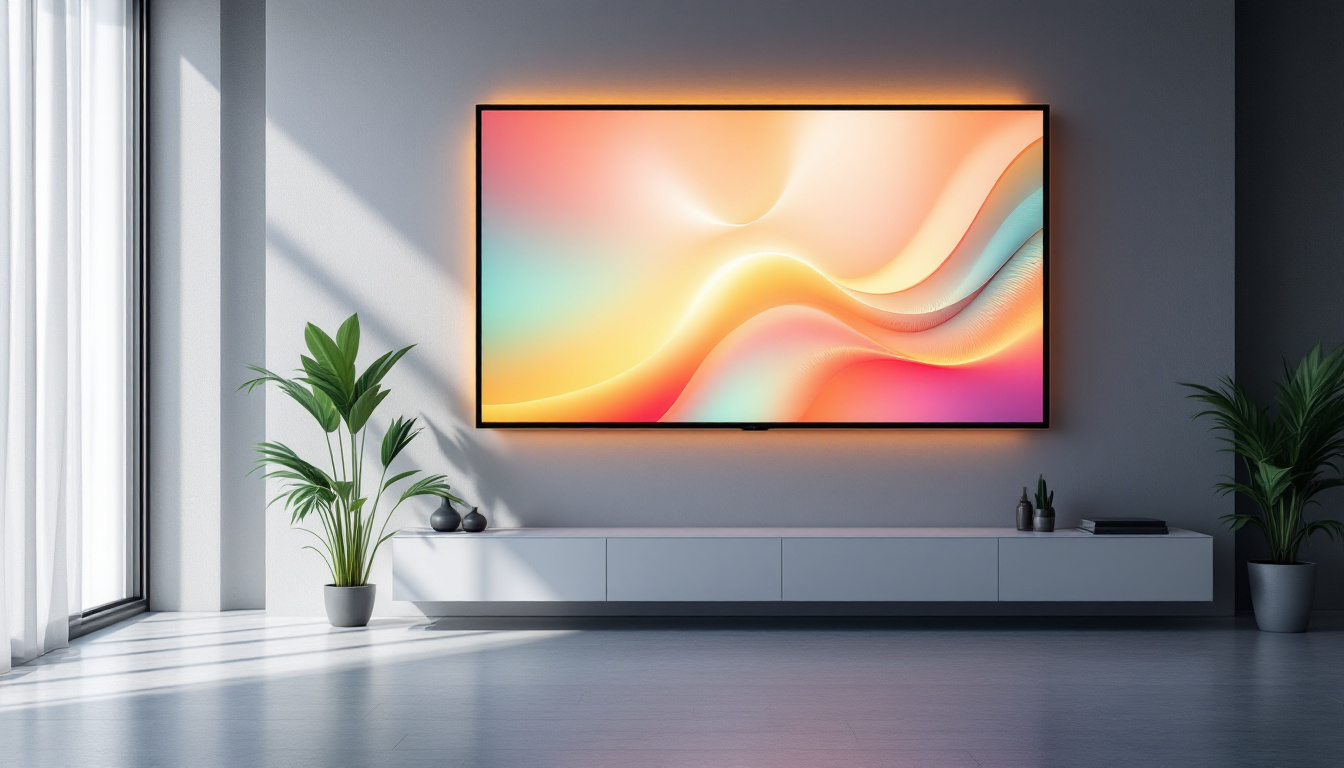In the modern world, LED displays have become ubiquitous, enhancing visual experiences in various sectors, from advertising to entertainment and beyond. This article delves into the intricacies of LED display technology, exploring its components, types, applications, and future trends.
Understanding LED Technology
Light Emitting Diodes (LEDs) are semiconductor devices that emit light when an electric current passes through them. This simple yet effective technology forms the backbone of LED displays, which have revolutionized how information and entertainment are presented. From billboards to television screens, the versatility and efficiency of LEDs have made them a staple in modern visual technology.
How LEDs Work
At the core of an LED is a chip made from a semiconductor material, typically gallium, arsenide, or gallium phosphide. When electricity flows through the chip, electrons recombine with holes, releasing energy in the form of photons—this is the light that we see. The color of the light emitted depends on the materials used in the semiconductor. For instance, using different combinations of elements can produce a spectrum of colors, enabling the creation of full-color displays that can convey rich imagery and detailed graphics.
This process is highly efficient, converting a significant portion of electrical energy into visible light, which is why LED technology is favored for displays. Unlike traditional incandescent bulbs, which waste a lot of energy as heat, LEDs generate minimal heat, making them more sustainable and cost-effective. Furthermore, their longevity—often exceeding 25,000 hours—means that they require less frequent replacements, contributing to lower maintenance costs and less environmental waste over time.
Components of an LED Display
An LED display is composed of several key components that work together to create vibrant images and videos. These include:
- LED Modules: These are the building blocks of an LED display, containing clusters of LEDs arranged in a grid.
- Control System: This system manages the display’s content, ensuring that images and videos are rendered accurately and in real-time.
- Power Supply: A stable power supply is crucial for maintaining the performance of an LED display, providing the necessary voltage and current.
In addition to these components, LED displays often incorporate advanced features such as brightness sensors that automatically adjust the display’s luminosity based on ambient light conditions. This not only enhances visibility but also contributes to energy savings. Moreover, many modern LED displays support various connectivity options, including HDMI, USB, and wireless technologies, allowing for seamless integration with other digital devices and content management systems. This adaptability makes LED displays ideal for a wide range of applications, from advertising and public information to artistic installations and live event broadcasting.
Types of LED Displays
LED displays come in various types, each designed for specific applications and environments. Understanding these types can help in selecting the right display for a particular need.
Indoor LED Displays
Indoor LED displays are designed for use in controlled environments, such as conference rooms, shopping malls, and theaters. They typically feature a higher pixel density, which allows for clearer images and text at closer viewing distances.
These displays are often used for advertising, information dissemination, and entertainment purposes. Their vibrant colors and high brightness levels make them ideal for capturing attention in bustling indoor settings.
Outdoor LED Displays
Outdoor LED displays are built to withstand harsh weather conditions, including rain, snow, and extreme temperatures. They are generally larger and have lower pixel density compared to indoor displays, as they are viewed from greater distances.
Commonly used for billboards, sports arenas, and public events, outdoor LED displays are designed to be highly visible in direct sunlight. They employ advanced technologies to enhance brightness and contrast, ensuring that the content remains legible regardless of the lighting conditions.
Transparent LED Displays
Transparent LED displays are a cutting-edge innovation that allows for the integration of digital content with physical environments. These displays can be installed in windows or glass surfaces, providing a unique way to showcase advertisements while still allowing visibility through the glass.
They are particularly popular in retail settings, where they can enhance product displays without obstructing the view of the merchandise behind them. This technology opens up new possibilities for creative advertising and interactive experiences.
Applications of LED Displays
The versatility of LED displays has led to their adoption across numerous industries. Their ability to convey information dynamically makes them invaluable in various applications.
Advertising and Marketing
In the advertising sector, LED displays have transformed how brands communicate with consumers. Digital billboards and signage can be easily updated, allowing for real-time promotions and targeted messaging. This flexibility enables businesses to engage with their audience more effectively.
Moreover, the eye-catching nature of LED displays draws attention, making them a preferred choice for high-traffic areas. The ability to display videos, animations, and vibrant graphics enhances brand visibility and recall.
Entertainment and Events
LED displays play a crucial role in the entertainment industry, from concerts and festivals to sports events. Large-scale LED screens are used to broadcast performances, provide live feeds, and enhance the overall experience for attendees.
In addition to traditional events, LED displays are increasingly utilized in immersive experiences, such as virtual reality and augmented reality installations. Their ability to deliver high-quality visuals in real-time makes them essential for creating engaging environments.
Information Dissemination
LED displays are widely used for information dissemination in public spaces, such as airports, train stations, and shopping malls. digital signage can provide real-time updates on schedules, directions, and important announcements, improving the overall user experience.
In educational institutions, LED displays are used for announcements, event promotions, and interactive learning. Their dynamic nature allows for the integration of multimedia content, making information more engaging and accessible.
Advantages of LED Displays
The growing popularity of LED displays can be attributed to their numerous advantages over traditional display technologies. These benefits make them a preferred choice for various applications.
Energy Efficiency
One of the most significant advantages of LED displays is their energy efficiency. They consume considerably less power compared to traditional displays, such as LCDs and CRTs. This not only reduces operational costs but also contributes to environmental sustainability.
Furthermore, LED technology has a longer lifespan, meaning that businesses can save on maintenance and replacement costs over time. This combination of energy efficiency and longevity makes LED displays a smart investment.
High Brightness and Contrast
LED displays offer superior brightness levels and contrast ratios, making them ideal for various lighting conditions. Whether in a dimly lit room or under direct sunlight, LED displays maintain clarity and vibrancy, ensuring that content is easily visible.
This capability is particularly important for outdoor applications, where visibility can be compromised by ambient light. The ability to adjust brightness levels dynamically further enhances their performance in changing environments.
Versatility and Customization
LED displays are highly versatile and can be customized to fit a wide range of applications. They can be configured in various shapes and sizes, allowing for creative installations that cater to specific needs.
Additionally, the modular nature of LED displays enables easy scalability. Businesses can start with a small display and expand it as needed, making it a flexible solution for evolving requirements.
Challenges and Considerations
Despite their numerous advantages, LED displays also come with certain challenges and considerations that need to be addressed.
Initial Cost
The initial investment for LED displays can be higher than that of traditional display technologies. While the long-term savings in energy and maintenance costs often justify this expense, businesses must carefully evaluate their budgets and return on investment.
It is crucial to consider not only the upfront costs but also the potential benefits that LED displays can bring in terms of increased visibility and engagement.
Technical Complexity
LED displays require a certain level of technical expertise for installation and maintenance. Businesses may need to invest in training or hire specialized personnel to ensure optimal performance.
Moreover, the rapid evolution of LED technology means that staying updated with the latest advancements can be challenging. Continuous learning and adaptation are essential to leverage the full potential of LED displays.
The Future of LED Display Technology
The future of LED display technology looks promising, with ongoing innovations and advancements on the horizon. As technology continues to evolve, several trends are emerging that could shape the future of LED displays.
Integration with Smart Technologies
As the Internet of Things (IoT) continues to expand, the integration of LED displays with smart technologies is becoming increasingly prevalent. This allows for enhanced interactivity, real-time data display, and improved user experiences.
For instance, LED displays can be connected to sensors that adjust brightness based on ambient light or display content based on audience demographics. Such integration will pave the way for more personalized and engaging experiences.
Advancements in Flexibility and Design
Future LED displays are expected to become even more flexible and adaptable. Innovations in materials and manufacturing processes may lead to displays that can be bent, curved, or even embedded into various surfaces.
This opens up new possibilities for creative installations and applications, allowing designers and advertisers to think outside the box and create unique visual experiences.
Enhanced Sustainability
As sustainability becomes a priority for many businesses, the LED display industry is also moving towards more eco-friendly practices. This includes using recyclable materials, reducing energy consumption, and improving the overall lifespan of displays.
Future advancements may focus on developing LED technology that minimizes environmental impact while maximizing performance. This shift will not only benefit businesses but also contribute to a more sustainable future.
Conclusion
LED display technology has transformed the way information is presented and consumed across various industries. With their energy efficiency, high brightness, and versatility, LED displays are set to continue playing a pivotal role in advertising, entertainment, and information dissemination.
As technology evolves, the future of LED displays promises even more exciting developments, paving the way for innovative applications and enhanced user experiences. Businesses looking to invest in display technology should consider the benefits and challenges of LED displays, ensuring they make informed decisions that align with their goals and objectives.
In a world where visual communication is paramount, LED displays stand out as a powerful tool for engagement and connection. Their ability to captivate audiences and deliver dynamic content makes them an essential component of modern communication strategies.
Discover LumenMatrix LED Display Solutions
Ready to elevate your visual communication strategy with the latest in LED display technology? LumenMatrix is at the forefront of innovation, offering a diverse range of LED display solutions tailored to your needs. From the vibrant clarity of Indoor LED Wall Displays to the robust durability of Outdoor LED Wall Displays, and the creative flexibility of Custom LED Displays, we have the technology to bring your vision to life. Experience the power of LED displays and transform your space into a dynamic environment. Check out LumenMatrix LED Display Solutions today and start making a lasting impression.

